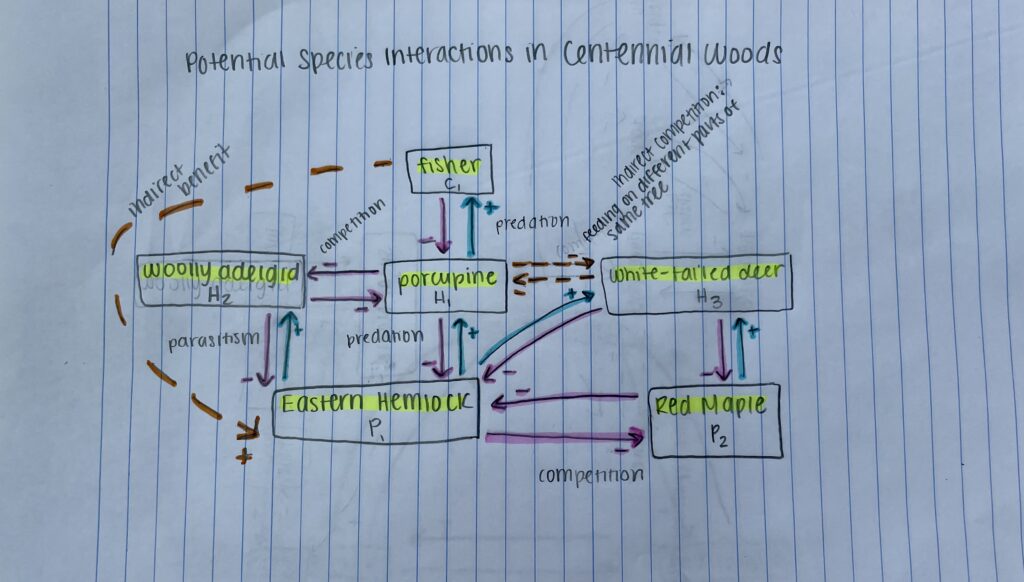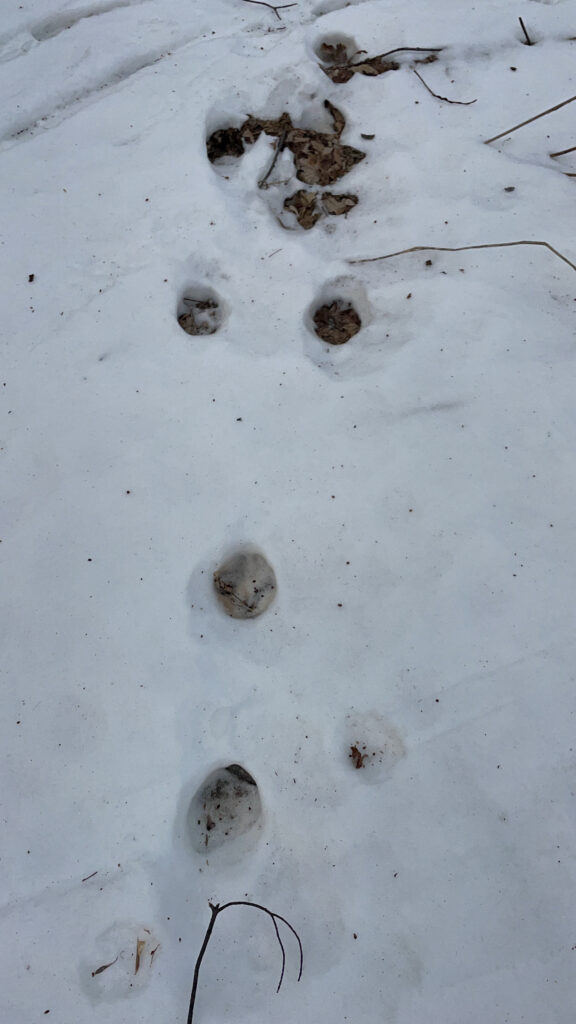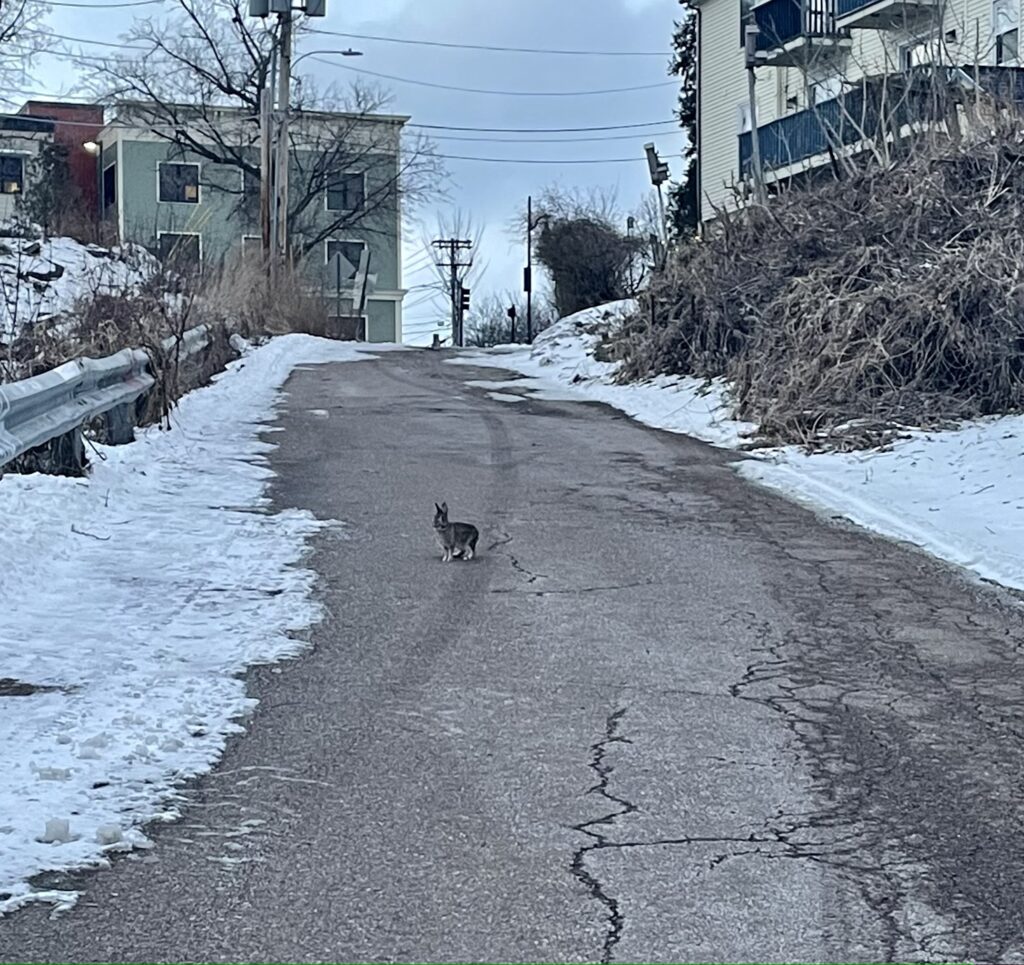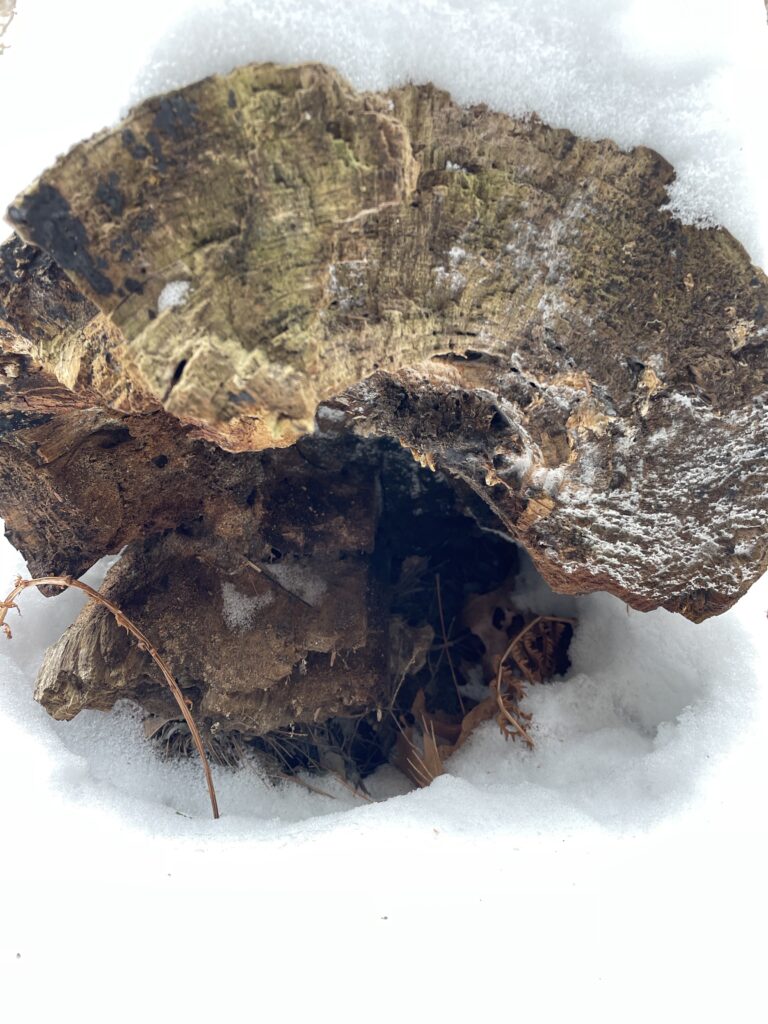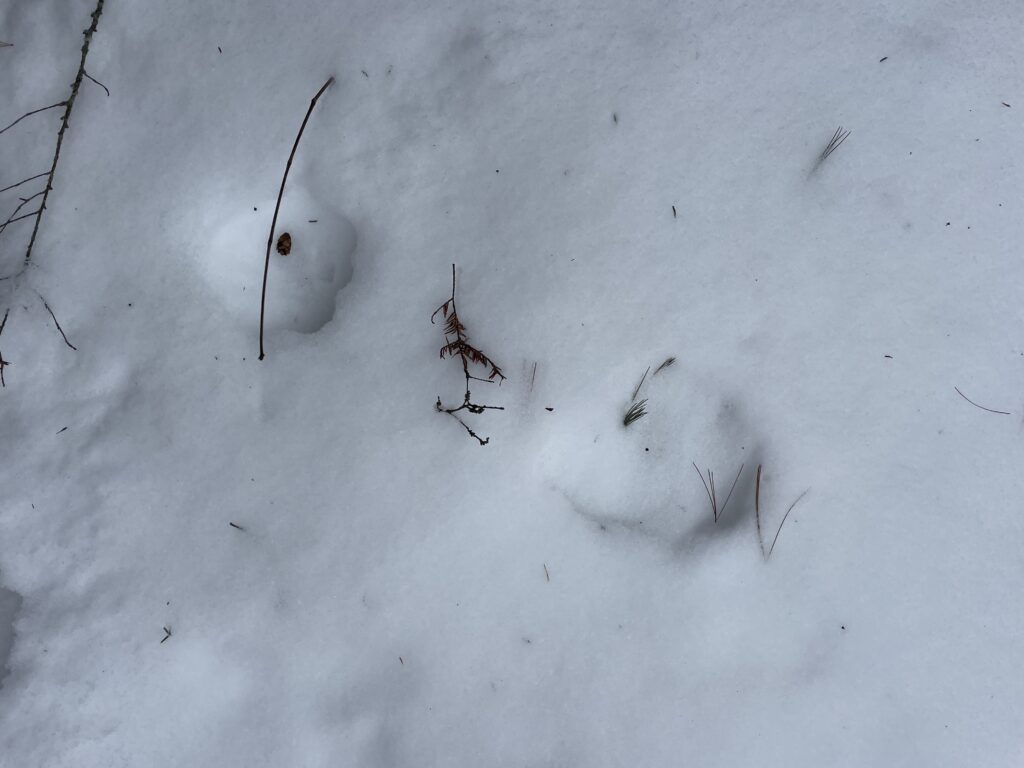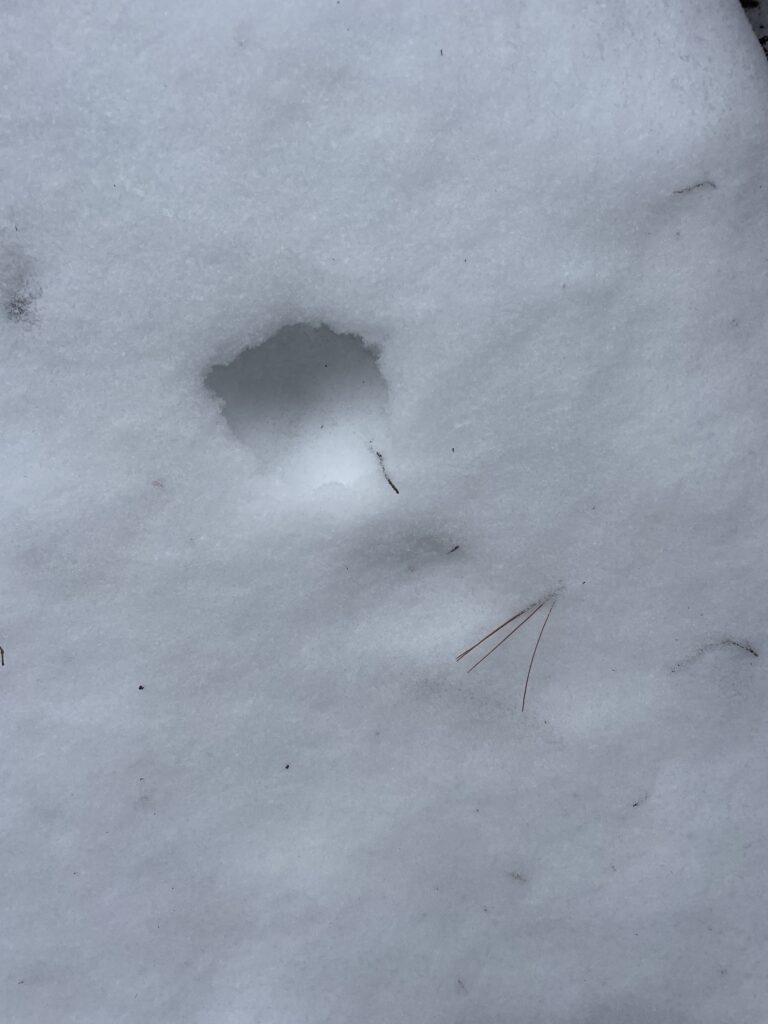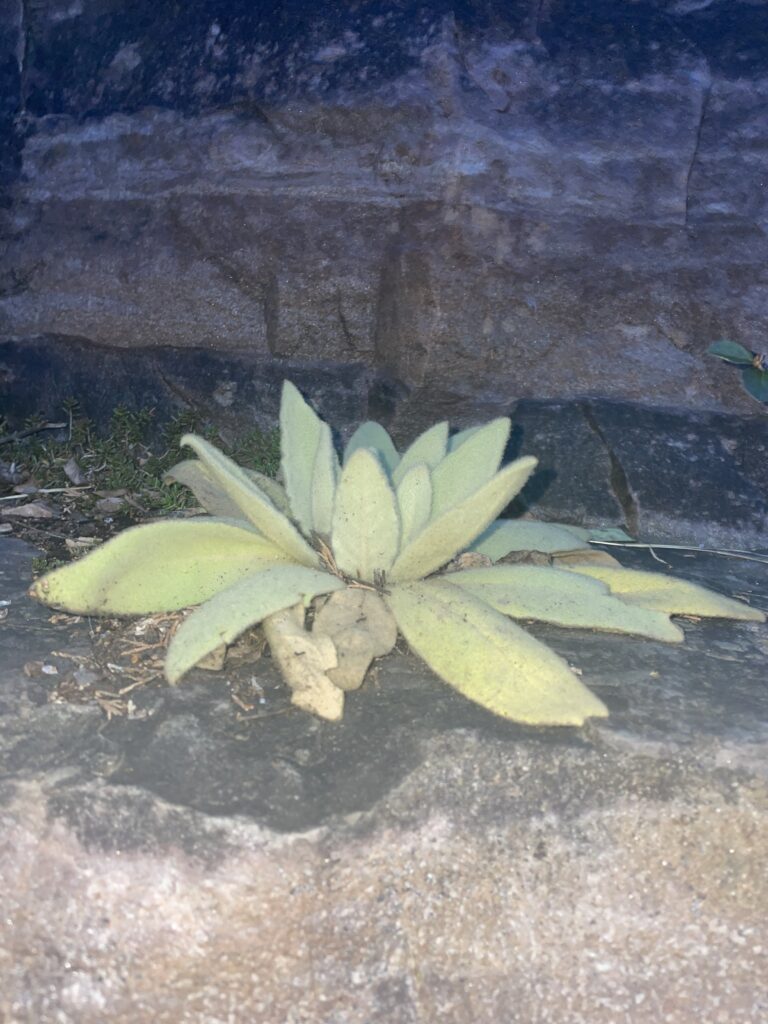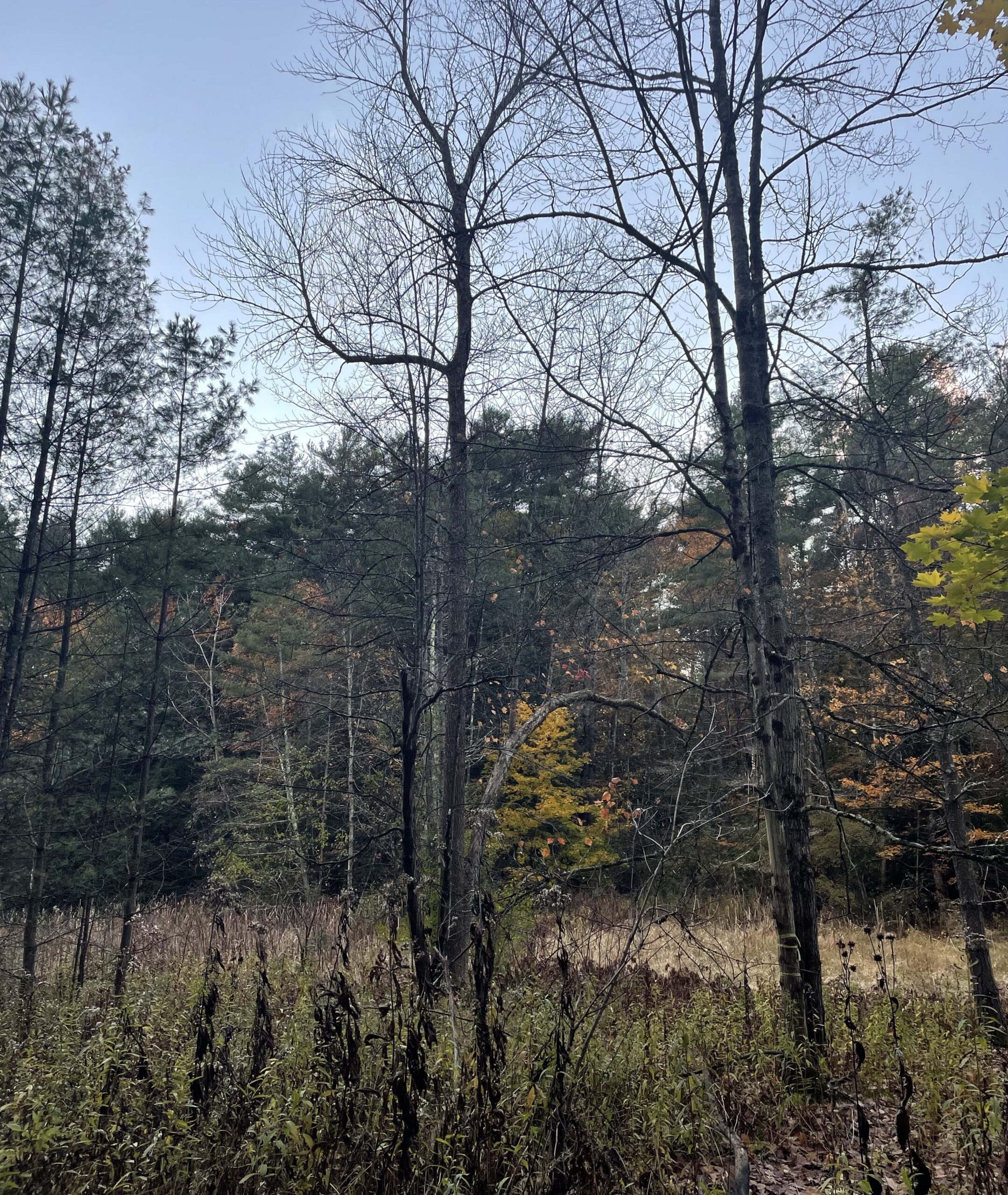It’s so crazy that today was the last time I’m going to visit my phenology spot this year. But I definitely was able to end off the year with a bang because today was a BEAUTIFUL day. My phenology spot has come back to life! So many plants are in bloom! Ferns are beginning to unfurl underneath the Hemlocks, and the Red Maple by the bank of Centennial Brook has started to flower. Debris from the Sugar Maple blossoms was scattered all around the tree, hinting that White-Tailed Deer were likely present and feeding. Centennial was alive with bird calls coming from all directions. They all blended into each other and were really difficult for me to distinguish, but I definitely heard an owl which was really cool. Moss and lichen were visible once again in the Hemlock stand both on living trees and organic debris on the ground. Centennial Brook is no longer covered with snow and was running freely today, though the water level was looking much lower than I remember it being. I even saw a Water Strider seemingly fighting to get upstream. The point of land that juts out against the bank was very damp, and much of the underbrush hasn’t regrown yet. The buds of the staple Red Osier Dogwood at my phenology site have begun to bloom. Canada Mayflower and Creeping Buttercup have started peeking above the underbrush. A new Burdock plant is also beginning to grow. The existing Burdock Plant hasn’t started to bloom yet and is still brown and dormant. The grassy area on the other side of the brook is also visible once again and was covered in growing Wood Horsetail grass. I also saw a Goldenrod Gall Fly sack, which I learned how to identify in lab. It was really cool to realize that the hole in one of the damaged Hemlocks was likely made by a Pileated Woodpecker! I’ve been watching the spot for signs of life all year, and now having the knowledge to make an educated guess about what likely created the hole and inhabited it was really satisfying.


Wood Horsetail
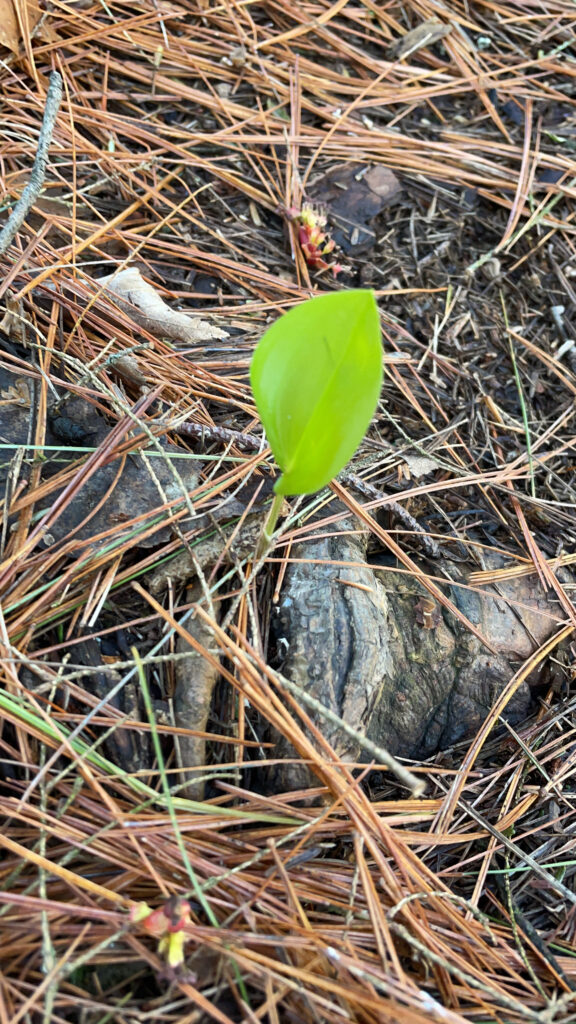
Canada Mayflower

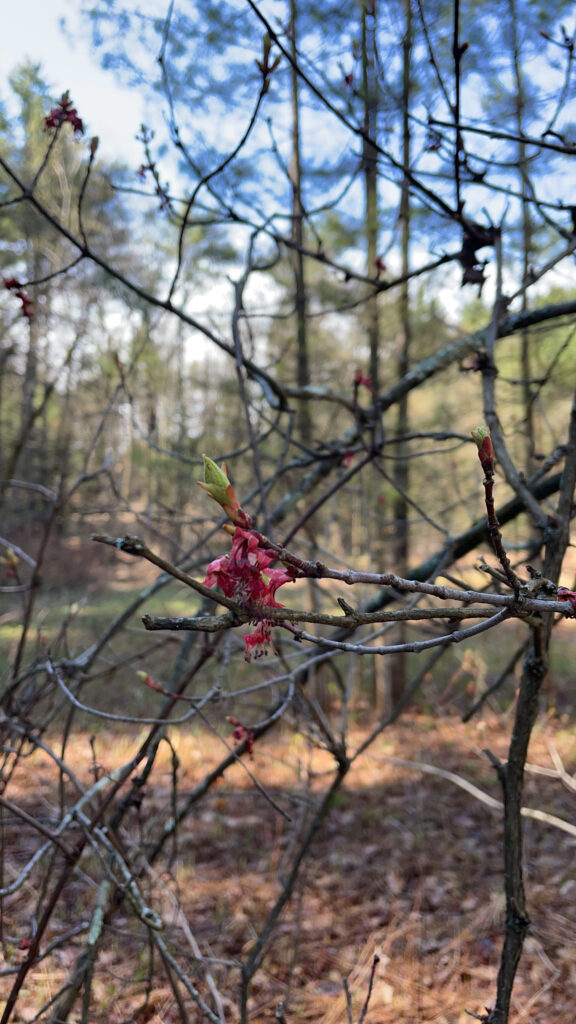
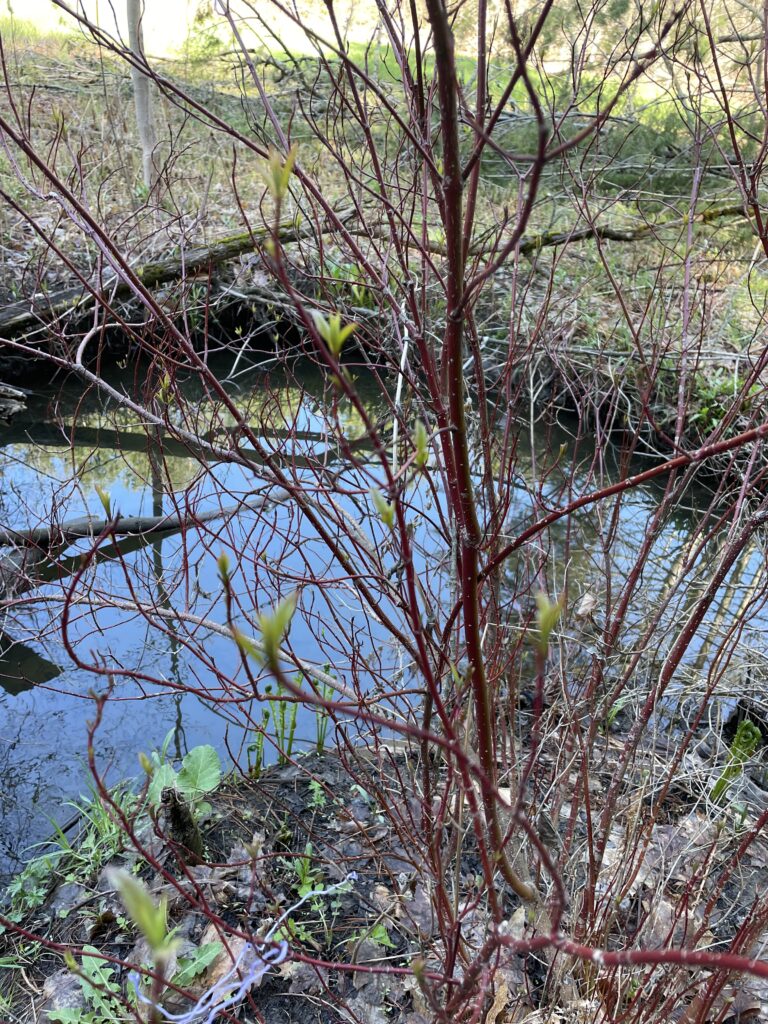


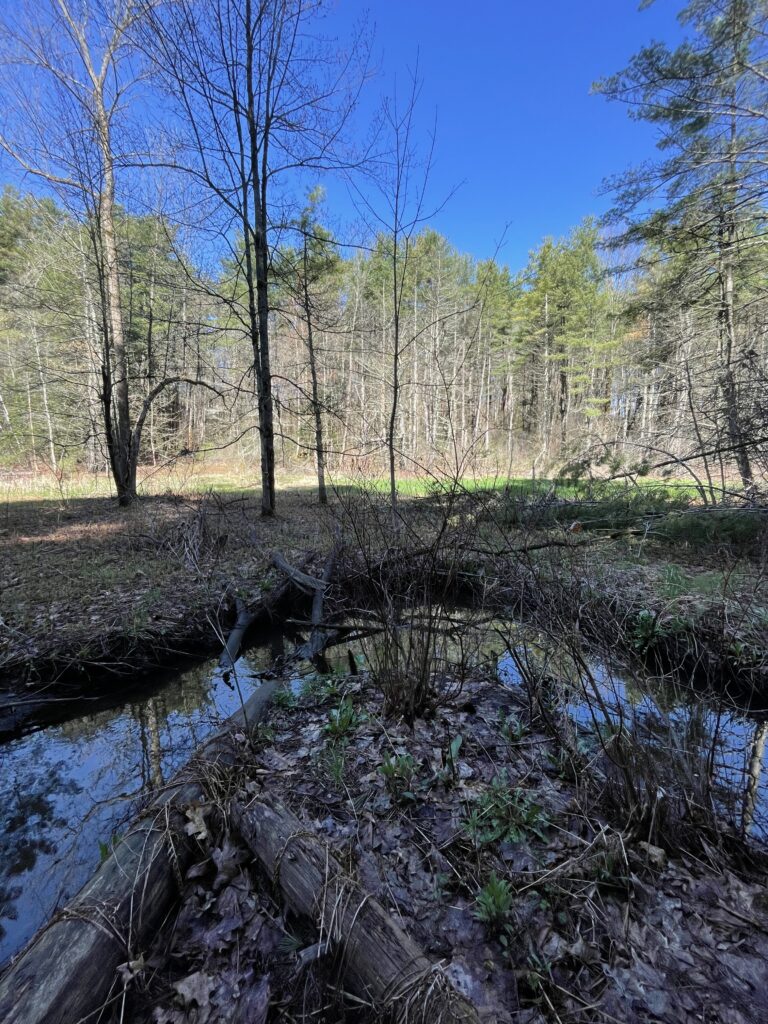
In what ways do nature and culture intertwine at your place? Do you consider yourself a part of your place? Why or why not?
Nature and culture intertwine not only at my phenology spot, but across nearly all of the world’s ecosystems. Human connection with the environment is an enormous part of our culture and there is evidence of our values throughout the natural world. We use natural areas for recreation, education, and to benefit our overall health and well-being. The trails that I walk to reach my phenology spot are covered in shoe prints, I see fellow peers exploring the woods around me, and installations like electricity lines and power grids are constant reminders of the ways human activity and the environment intersect. It is because human impact is so clear that I don’t really consider myself a part of my phenology place. It’s been hard for me to really connect with Centennial Woods, the sound pollution from roadways and jets overhead and constricted area are a constant reminder that I am in Burlington. I hope that as I spend more time in Burlington in the coming years I come to feel more at home in the landscape here. When Burlington truly feels like home, I will definitely begin to consider myself a part of its beautiful natural landscapes.
